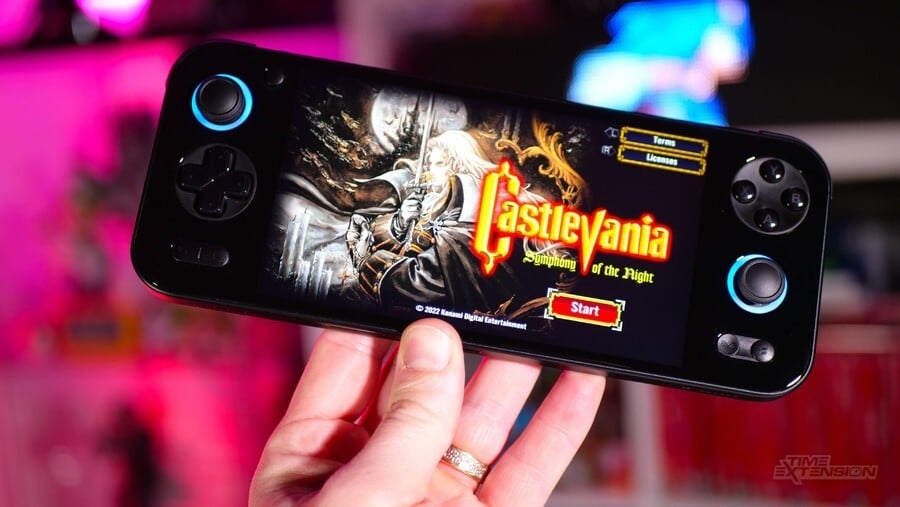
AYANEO has previously made a name for itself in the realm of gaming PC hardware, from portable powerhouses like the Flip DS and Flip KB to tiny desktop devices, such as the AM01 and AM02 'retro' mini computers.
It has also dipped a toe into the world of Android-based gaming with the Pocket Air, a portable gaming system which uses the same case design as the company's Windows-powered 'Air' line.
However, AYANEO has abandoned that approach with its next Android portable, the impossibly slick Pocket S. With premium construction, a huge 1440p display (on one of the models, at least) and a powerful Qualcomm Snapdragon G3x Gen 2 chipset running the show, could this be your next handheld emulation champion? We're going to find out.
AYANEO Pocket S Review: Design & Display
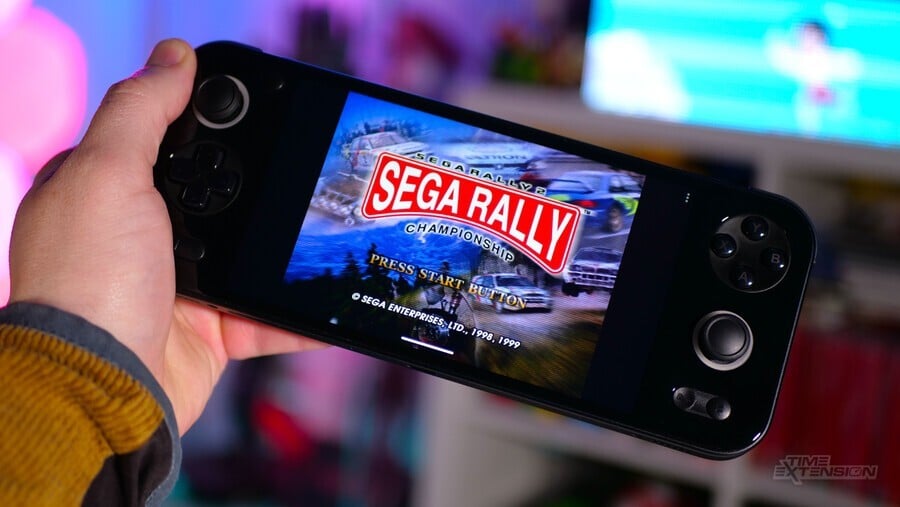
It's almost a given that AYANEO's products boast a decent level of build quality, but the Pocket S is comfortably one of the most 'premium' devices the company has produced so far.
The best comparison we can give is that the Pocket S looks and feels like a smartphone that's been turned into a handheld game console; from the metal frame to the all-glass front panel, this device exudes quality. It's also very thin, which again triggers comparisons with devices from the likes of Samsung and Apple. The only aspect which doesn't feel totally premium is the plastic back panel.
On the front, we have a pretty traditional setup when it comes to controls and buttons. There are two Switch-style, Hall Effect analogue sticks (complete with RGB lights), a cross D-pad, four action buttons in a diamond arrangement and a few other function keys here and there. Especially important is the dedicated AYANEO menu button, which summons a pop-in menu that allows you to toggle all manner of settings, including the amount of processing power the device can call upon at any given time (more on that later).
On the top edge, we have eight different buttons – two linear Hall Effect analogue triggers (left and right), two shoulder buttons (left and right) and two additional function buttons. You'll also find the volume rocket and power button on the top of the device. The bottom edge is home to the USB-C port, while the MicroSD card slot is located on the left-hand side. On the right is a switch which allows you to instantly toggle between the device's 'Max', 'Balanced' and 'Game' power modes. There's no 3.5mm headphone socket.
In terms of size, the Pocket S is roughly similar to the Switch Lite but has a more robust feel. It's comfortable to use for prolonged periods, too; the D-pad placement might cause issues for some people (we did feel our thumb cramping slightly after a few hours), but overall, everything feels pretty decent. The Switch-style sticks might be a little on the small side for some people, but we had no issues with them personally.
AYANEO is releasing the Pocket S with two screen types – the "Advance" version we've been sent has a 6-inch 1440p IPS panel with a pixel density of 490ppi, which is complete overkill for a screen of this size, if we're honest. The more common iteration of the Pocket S will have a 1080p screen, which is likely to be more sensible resolution anyway, especially when you take into account that a 1440p panel is going to put additional strain on the battery for very little visible gain.
Beyond the resolution, we're pleased to report that the screen on the Pocket S is bright and colourful, with plenty of punch and great contrast. It's not an OLED panel, which feels like a step back when compared to the AYANEO Pocket Air, but it's almost as good.
AYANEO Pocket S Review: Software & Storage
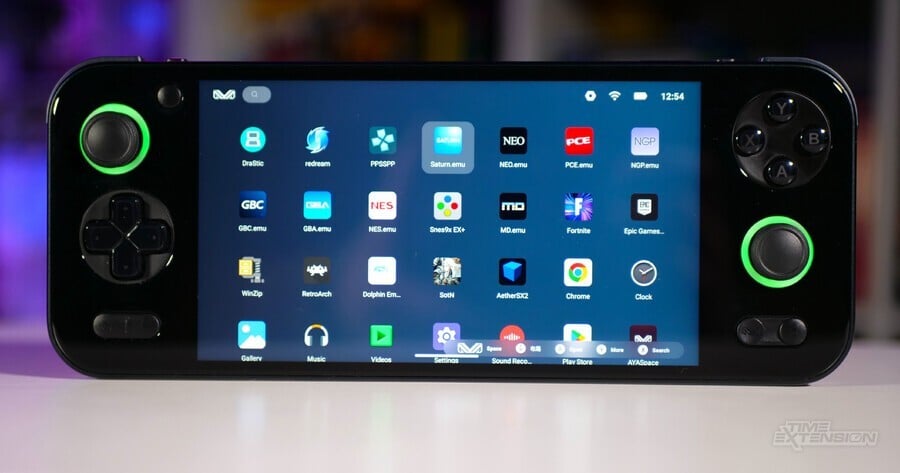
The AYANEO Pocket S is running Android 13, which means you benefit from the absolutely massive ecosystem of apps and games that have been released on Google's world-leading mobile OS over the past few years. That includes a dazzling selection of emulators, including RetroArch, Dolphin and Saturn.emu.
As is the case with all of its products, AYANEO has included some of its secret sauce in the software department. AYASpace is designed to be a one-stop solution when it comes to gaming, allowing you to populate and curate your own personal library of retro games. You can import existing retro game libraries using this app or allow it to automatically add titles as you play them, but, like many of AYANEO's apps, it often feels like a work in progress. It may well become useful after a few more updates, but we found ourselves largely ignoring it after a while.
Another, more useful addition made by AYANEO is the pop-in menu, which appears when you tap the AYANEO button in the bottom-right of the Pocket S' front panel. This causes a settings menu to appear on the right-hand side of the screen, regardless of what app or game you're running. From here, you can change the device's power demands, toggle various system settings and adjust elements of the physical controls, all without having to exit what you're currently doing.
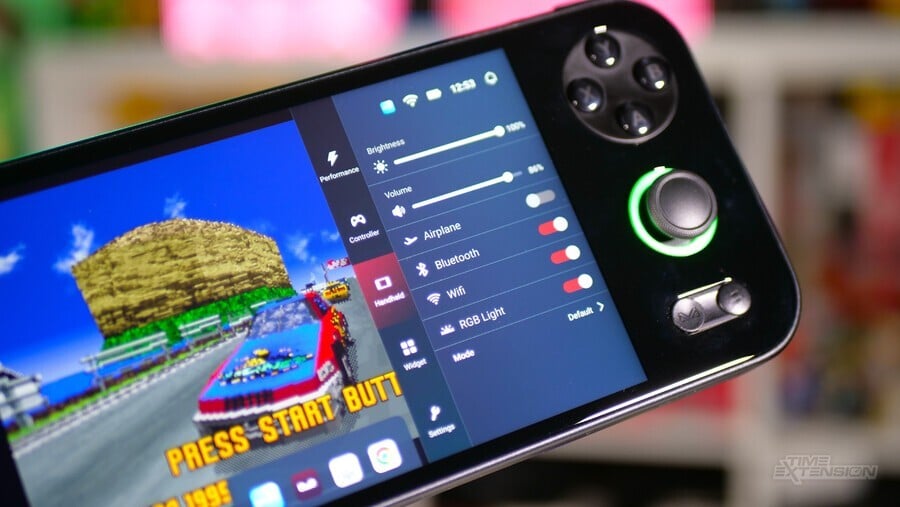
We should note that the unit we were sent isn't a final production model, and there were a few odd things going on with the software. For example, despite running the Google Play store and Google Play Services flawlessly, we've got a warning in the notification bar which says, "This device isn't Play Protect certified", which means Google services shouldn't be running on it. Also, we had an error on Fortnite which claimed that USB debugging was active; it wasn't, but enabling development mode and toggling it on and then off seemed to solve the issue. These problems will hopefully be reminded by the time the device is released to retail.
The unit we were sent to review comes with 128GB of internal storage. If you're planning on downloading a bunch of retro games, then that figure isn't going to go very far (we filled the Pocket S' storage within a day), so investing in a MicroSD card is almost essential. AYANEO is also producing a 1TB variant of the Pocket S, if you feel that money is no object.
AYANEO Pocket S Review: Performance & Battery Life
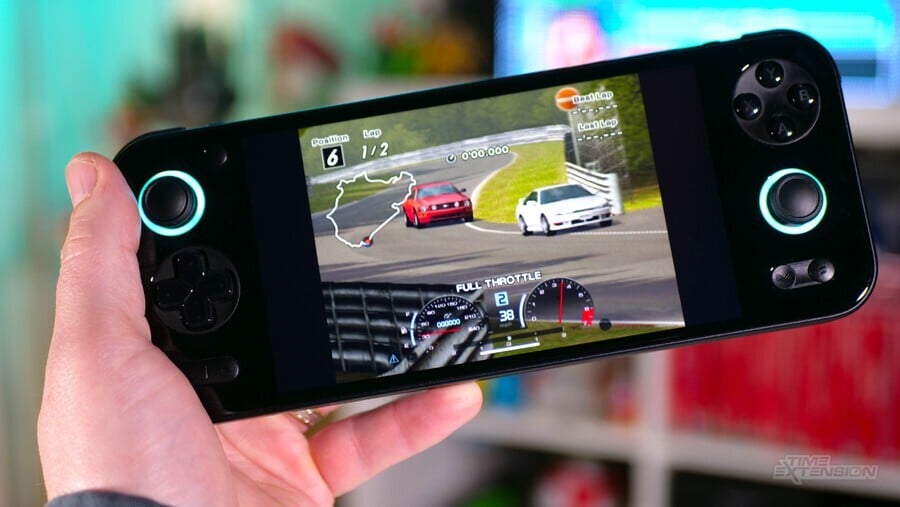
The headline news here is that the Pocket S comes with the fancy new Snapdragon G3x Gen 2 chipset, which offers incredible levels of performance in a device of this type.
Created using a 4nm manufacturing process and packing an 8-core Kryo CPU and Adreno A32 GPU, it's one of the fastest mobile chipsets available right now – and that means blistering performance when it comes to games and emulation.
Emulating systems like the Saturn, PS2, GameCube and even Switch isn't an issue with hardware this powerful, although you'll need to tinker with some settings in order to get the best level of performance – a common issue with emulation on Android. It's even possible to run PS2 and GameCube titles at higher resolutions than they did on their original hardware, making older titles look better than ever.
The emulator ecosystem on Android is pretty robust, with individual emulators sitting alongside multi-system front-ends, like the brilliant and insanely feature-rich RetroArch. While Apple's recent change of heart on emulation has eroded some of Android's advantage in this area, you're still going to get a wider selection of options on Google's OS, at least for the time being.
Then there's the vast selection of Android games, too; granted, many of them are better suited to a smartphone rather than a gaming device like the Pocket S, but the fact that Castlevania: Symphony of the Night is officially available on this system (and with support for physical controls) when it still isn't on the Switch or Steam Deck is a definite selling point, at least in our book.
There's a 6000mAh battery inside the Pocket S, the stamina of which can vary wildly depending on what you're doing and how hard you're pushing the device. If you're sticking to low-level emulation and you pop the Pocket S into its 'balanced' power setting, you'll find you can get quite a lot of use out of a single charge – however, load up Fortnite (which runs superbly on this thing, by the way) and you'll notice how hot the unit gets, and how loud the fan becomes as it trys to cool things down. In this scenario, you'll be lucky to get more than a few hours of play before you have to head to the wall socket.
AYANEO Pocket S Review: Specs & Pricing
| CPU | Qualcomm Snapdragon G3x Gen 2 |
| Main Display Options |
|
| Storage / RAM / Price Options | |
| RAM Type | LPDDR5X |
| Battery | 6000mAh |
| Expansion | MicroSD card slot |
| Wireless Connectivity | WiFi 7 / Bluetooth 5.3 |
| Control Interface |
|
| Vibration | X-axis linear motor |
| Motion Controls | Six-axis gyroscope |
| I/O Options | USB 3.2 Gen 2 Type-C |
| Audio Output | Bluetooth |
| Biometrics | Fingerprint scanner |
| Weight | 350g |
| OS | Android 13 |
AYANEO Pocket S Review: Conclusion
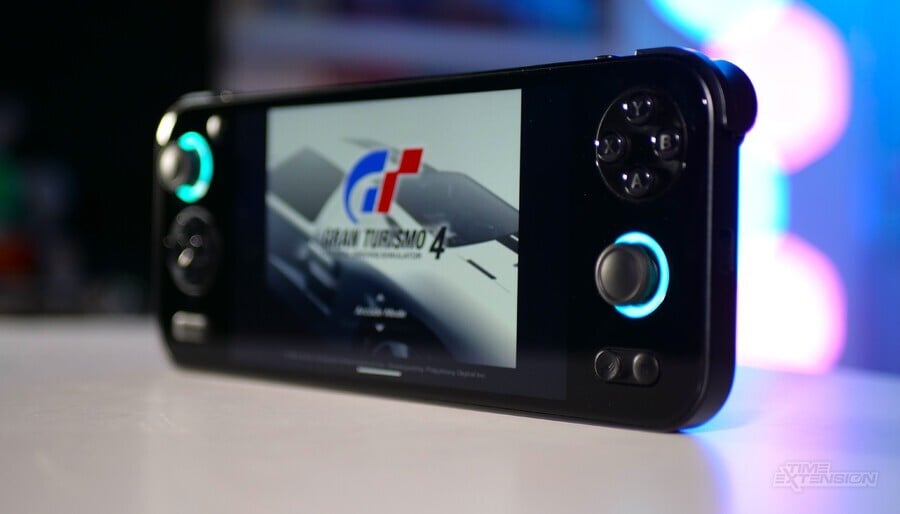
There's no denying that the AYANEO Pocket S is a lovely piece of kit. It boasts a premium design with a great screen, and has the power required to handle demanding emulation and run Android games perfectly.
The only catch is the price; starting at $400 for the lowest spec model, the Pocket S costs the same as a Steam Deck – and while you can arguably claim that it's a more advanced piece of kit in many ways, it's perhaps not quite as versatile as Valve's handheld.
However, when compared to other Android-based gaming devices – such as the Pocket Air (starting price: $319) and the Razer EDGE ($399) – the Pocket S isn't quite as expensive as you might think. Android devices are clearly coming of age in terms of raw processing power, and the gap in performance between them and dedicated Linux / Windows handhelds certainly appears to be closing.
There are also many reasons to pick this over a device like the Steam Deck; while both are potent emulation platforms, the Pocket S is arguably easier to get running in this regard, and has a sleeker, more portable form factor – as well as a higher resolution display.
We personally love the Pocket S' Switch Lite-style design, pin-sharp display, raw processing grunt and sheer versatility when it comes to emulation and mobile gaming – if AYANEO can fix the few small issues we have relating to stamina, software and price, it could be onto a winner with this family of devices.
